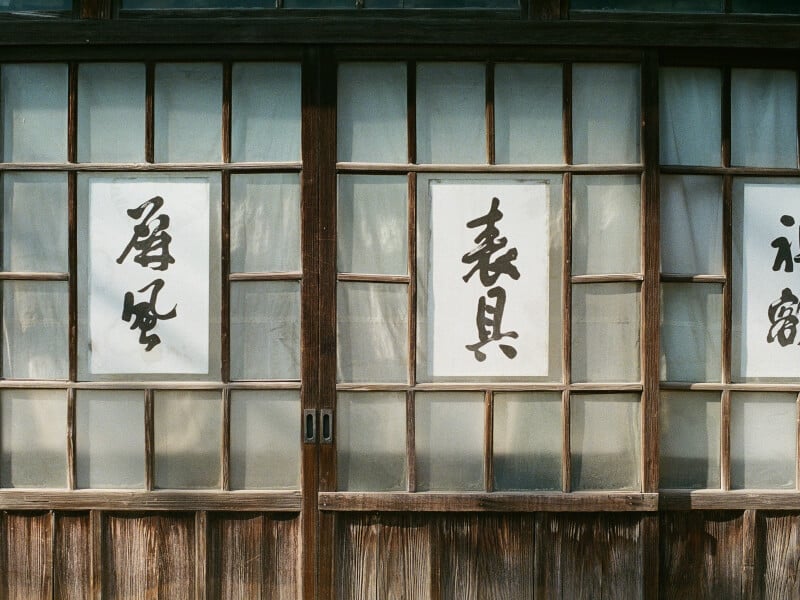In this story:
Curious about Japanese calligraphy? Journey back in time to discover the origins of this ancient art form...
Known as "shodo", which means "way of writing", Japanese calligraphy is essentially the art of writing beautifully and holds an important place in Japanese culture, much like Ikebana and traditional tea ceremonies.
.jpg)
While it was originally practiced by nobility, shodo is now taught in schools across the country and is a common hobby for people from all walks of life. Notably, however, truly mastering this revered art form is no easy feat and can take decades – but don't let that discourage you! Like many art forms, shodo is a learned practice, and anyone with a good dose of patience and commitment can gain the skills necessary to become a capable at-home calligraphy artist (even if the legibility of your handwriting rivals that of a doctor). Even students without so-called "natural talent" or a steady hand can soak up many of the mindfulness and wellbeing benefits associated with the craft.
Want to learn to create beautiful works of art with poise and grace? Let's dive into the rich history of Japanese calligraphy...

Exploring the origins of calligraphy
It may surprise you to learn that Japanese calligraphy actually calls another country its birthplace: China! Shodo was introduced in Japan as early as the 6th century, when the Japanese aristocracy decided that the delicate yet disciplined art form should become a part of the education of young royal members. As the practice developed, characteristics unique to Japanese culture surfaced and replaced some of the traditional Chinese elements.
Between 1185–1333 AD, another drastic change occurred in the practice of calligraphy, namely the influence of Zen Buddhism. This period saw a flourishing of artistic refinery across the archipelago, with the introduction of cultural traditions such as tea ceremonies, flower arranging, and landscape painting. Calligraphy was an integral part of this process and continues to be an important part of Japanese tradition.

The fundamentals of shodo
Artists of any discipline will tell you that quality tools are the most important part of the process. Without an understanding of and respect for your materials, you cannot advance in your craft. So here’s a foundational review of the tools most important to shodo:
• The brush, or fude: made from various types and blends of animal hair, the brushes used in shodo come in many different forms but usually have a handle of wood or bamboo. Depending on the character, broad-stroke or fine-line brushes must be used. It is very important to take diligent care of your fude.
• The ink stick and ink stone, or sumi and suzuri: the black ink used in shodo is created by rubbing the sumi (made from the soot of burned woods) on the suzuri (a heavy stone prepared with a few drops of water.) This creates a thick black ink that you dip your fude into.
• Shodo Paper, or Hanshi: though there are multiple ways to create paper for shodo, the most common method is washi, or hand-molded Japanese paper. Unlike paper used for Chinese calligraphy, this type of hanshi is very thin and does not soak up as much ink.
Understanding shodo's underlying values
After gaining an appreciation for the tools necessary in shodo, it is also helpful to explore the unique skills or values required when it comes to practising calligraphy. You may find that as you gain access to this skill set, you'll enjoy a range of cognitive and emotional benefits as well!
• Self-discipline: a key strength taught throughout the art of shodo is self-discipline. The art of Japanese calligraphy calls for a demanding amount of repetition, attention to detail and long-term commitment. By finding an internal well of strength and discipline, you can make great improvements as an artist. Studies show that self-discipline is an incredible skill that can be translated into a variety of settings outside of your calligraphy class. Self-discipline not only accounts for 80% of the goal attainment process, but also paves the way for mentally beneficial practices of self-love and respect!
• Perseverance: anyone who has failed at something knows how difficult perseverance can be, and because of the stringent technique necessary, shodo requires quite a bit of it! Perseverance can amplify feelings of fulfillment and achievement, and this payoff can make other challenges in your life seem more attainable as well!
• Focus: at the core of Zen Buddhism is a life-changing concept: mindfulness. Mindfulness is awareness of the present state of existence, an invitation to see things how they are and appreciate them without judgement or prescription. In other words, it's an attempt to focus the mind on the task at hand. With a technical craft like shodo, which forces its students to pay extreme attention to detail and form, mindfulness is more easily achieved. And this is great news for students interested in the wellness benefits of this ancient Japanese craft! Effective practice of mindfulness has been linked to a long list of health benefits, including reduced inflammation, better sleep, and stronger immunity.
Discover shodo for yourself
Whether you’re interested in learning a little bit about Japanese cultural traditions or you’re looking for a challenging creative outlet, a beginner’s class in shodo will intrigue and engage you. You'll learn about each integral part of the artistic process, from picking out the best materials to exploring the expressive Japanese characters. Along the way, you'll also pick up skills that can be translated into other areas of your life and contribute to your overall mental wellbeing!
Never tried calligraphy before? Don’t sweat it. Even if you’ve got shaky handwriting or you haven’t explored your artistic skills before, your shodo instructor will teach you to put pen to paper with confidence and ease!




















